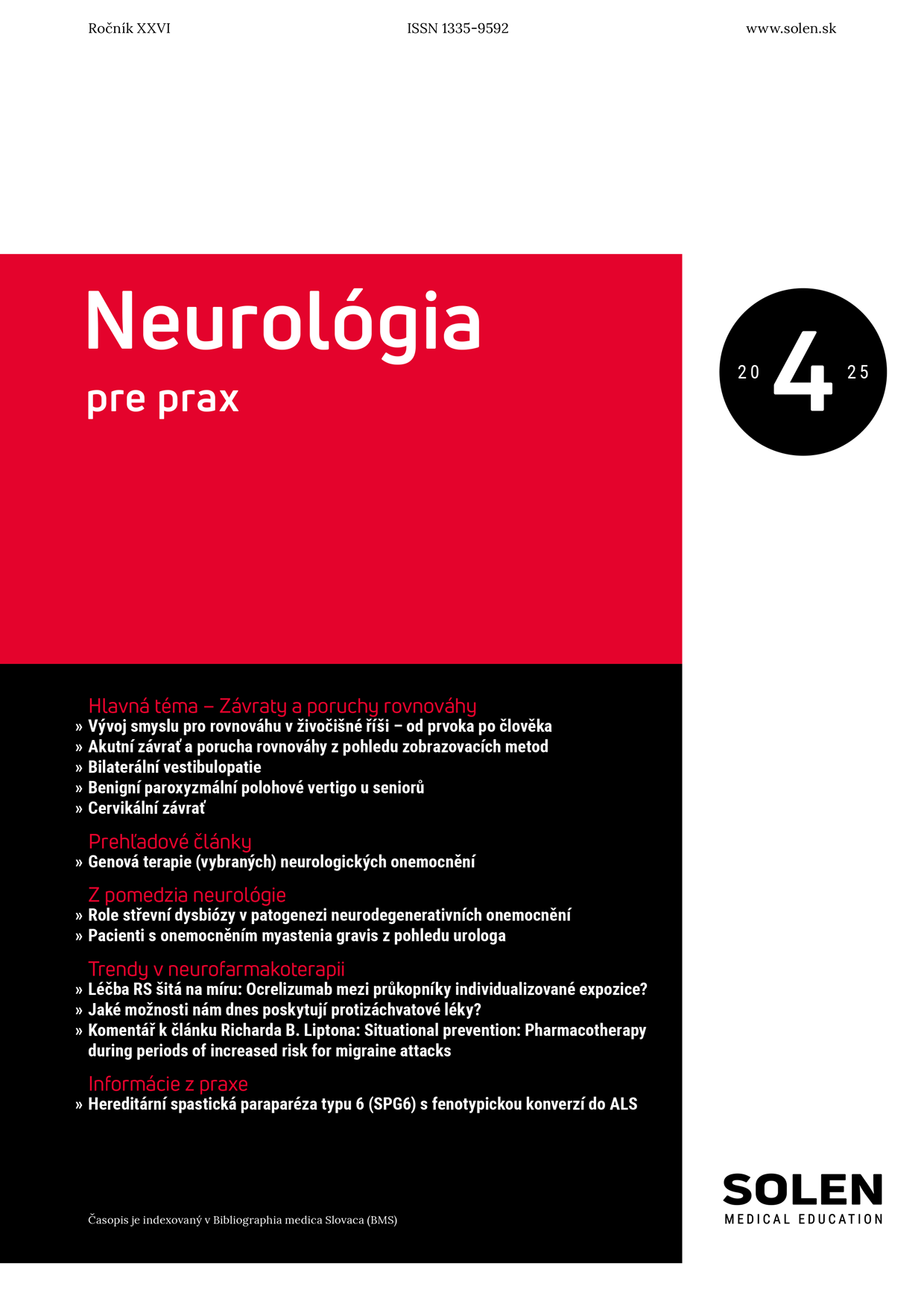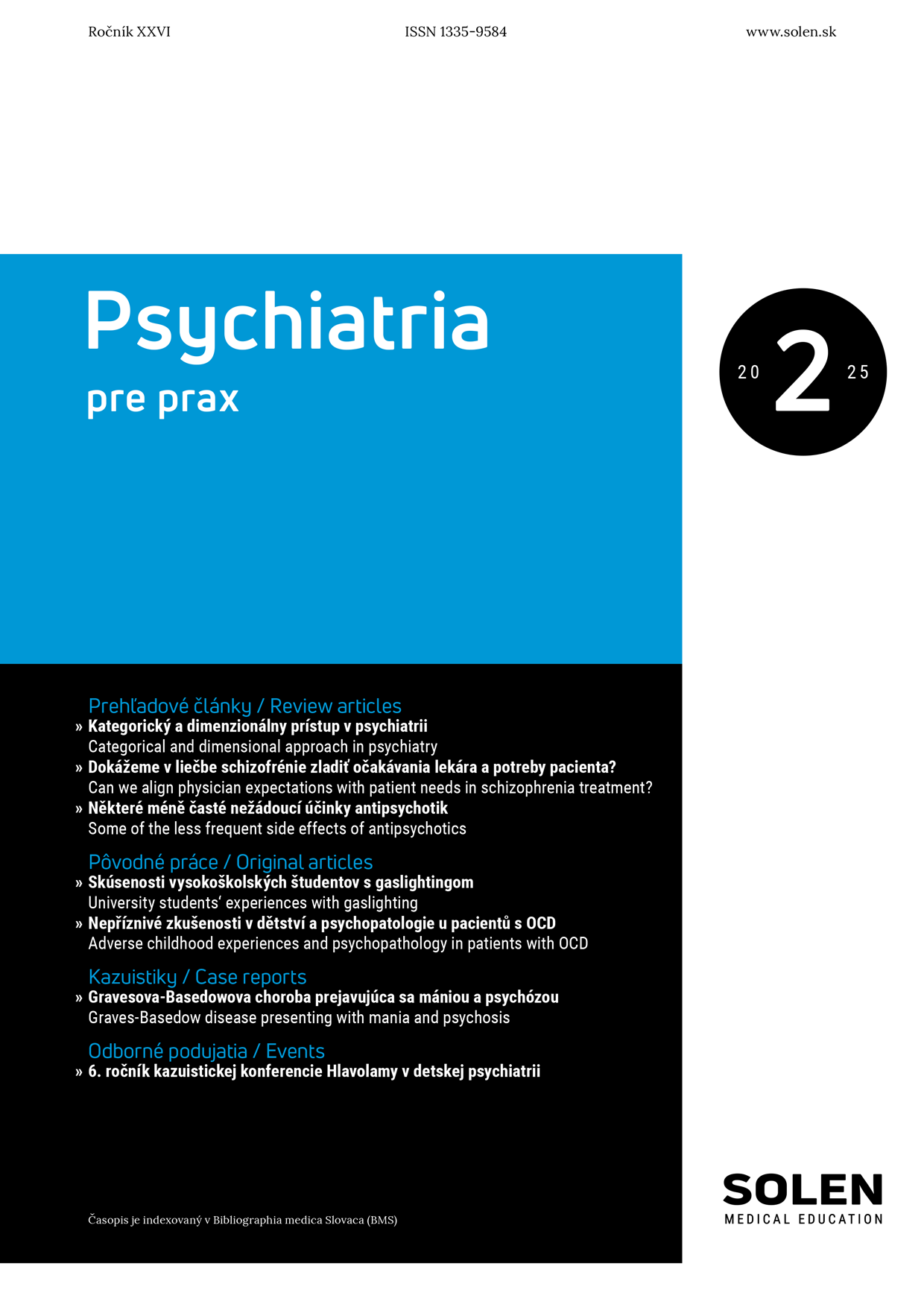Slovenská chirurgia 1-2/2020
Multiviscerálna resekcia ako možnosť liečby rozsiahleho gastrointestinálneho stromálneho tumoru – kazuistika
MUDr. Monika Miklóšová, doc. MUDr. Jozef Belák, PhD., MUDr. Marián Kudláč, MUDr. Ivan Kováč, PhD.
Gastrointestinálne stromálne tumory alebo tzv. GIST sú najčastejšie novotvary gastrointestinálneho traktu mezenchymálneho pôvodu vznikajúce transformáciou intersticiálnych Cajalových buniek alebo ich prekurzorov. Tieto nádory sú potencionálne malígne. Môžu byť lokalizované kdekoľvek v gastrointestinálnom trakte, najčastejšie však v žalúdku a tenkom čreve, menej často v - pažeráku, hrubom čreve a konečníku. GIST sa manifestujú ekvivalentne u obidvoch pohlaví, pričom maximum výskytu je medzi 40 až 70 rokom života. Incidencia sa pohybuje v rozmedzí 1-1,5 prípadov /100 000 obyvateľov. Väčšina gastrointestinálnych stromálnych tumorov je asymptomatická. Medzi základné prejavy ochorenia sú zaraďované dyspepsia a krvácanie, prvým prejavom ochorenia tak môže byť hemateméza alebo meléna. GIST sa vyskytujú aj ako súčasť familiárnych syndrómov ako je Carneyova triáda a neurofibromatóza typu 1. Zlatým štandardom diagnostiky je kontrastné CT vyšetrenie a dôkaz mutácie v géne pre tyrozínkinázu a PDGFR α (platelet-derived growth factor alpha). Jediná kurabilná liečba je chirurgická resekcia, nakoľko tieto nádory sú rezistentné na konvenčnú chemoterapiu aj rádioterapiu. Pri nemožnosti úplnej resekcie ako aj pri MTS postihnutí je plne indikovaná liečba inhibítormi tirozínkinázy. V našej kazuistike je opísaný prípad 75-ročnej pacientky liečenej pre GIST na II. chirurgickej klinike UPJŠ LF a UNLP v Košiciach.
Kľúčové slová: gastrointestinálne stromálne nádory, Cajalove bunky, multiviscerálna resekcia, imatinib
Multivisceral resection as a treatment option for a large gastrointestinal stromal tumor - a case report
Gastrointestinal stromal tumors or also called GISTs are the most common neoplasms of the gastrointestinal tract of mesenchymal origin resulting from the transformation of interstitial Cajal cells or their precursors. These tumors are potentially malignant. They can be located anywhere in the gastrointestinal tract, but most often in the stomach and small intestine, less often in the esophagus, appendix, rectum and colon. GISTs manifest equivalently in both genders, with a maximum incidence between 40 and 70 years. The incidence is between 1-1.5 cases per 100,000 people. Most of gastrointestinal stromal tumors are asymptomatic. Dyspepsia and bleeding are basic symptoms of the disease, so the first manifestation of GISTs may be hematemesis or melena. GISTs also occur as part of familiar syndromes such as Carney‘s triad and neurofibromatosis type 1. The standard of diagnosis is contrast CT examination and mutations provement in the gene for tyrosine kinase and PDGFR α (platelet-derived growth factor alpha). The only curable treatment is surgical resection because these tumors are resistant to chemotherapy and radiotherapy. Tirozine kinase inhibitors are highly effective in treatment. Our case report describes the case of a 75-year-old patient treated for GIST on IInd department of surgery UPJŠ LF and UNLP in Košice.
Keywords: gastrointestinal stromal tumors, Cajal cells, multivisceral resection, imatinib

















